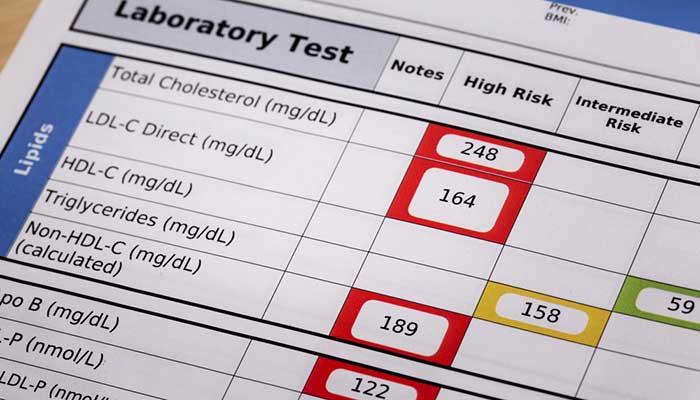#1. Know Your Limits

Anyone engaging in physical activity should listen to their body and know their limits. This is especially important for middle age adults, who have a greater risk for heart attacks and strokes. If chest pain develops during exercise, it’s crucial you stop the workout and seek immediate medical attention. Chest pain that increases with activity and goes away with rest is called stable angina, and needs to be evaluated by a medical professional before continuing a workout regimen.
#2. Take Your Vitamins

As parents, you’re always reminding your youngsters to take their daily vitamins to grow big and strong. Well, parents, now it’s your turn. Dieticians and healthcare providers recommend getting enough vitamins like vitamin D, B12, and calcium (especially for women). These vitamins are all crucial for bone, blood, brain and immune health, and can help decrease risk of certain diseases and cancers. As we age, our bodies change the way we absorb vitamins and sometimes we need an extra boost. Of course, always check with your healthcare provider prior to starting any vitamin regimen.
#3. Mix It Up

Studies have proven that physically fit adults can delay the development of chronic diseases like diabetes, heart disease, and dementia. The study highlighted that not only did the group of fitter adults live longer, but they enjoyed more healthy years. What’s important to note is that no one exercise alone can create such profound effects. Combining aerobic exercise with strength training can dramatically improve health. Additionally, those who mix up their exercise routine with various things they enjoy, like yoga, swimming, walking or biking, are more likely to maintain the regimen. Fitness experts suggest a 5 minute cardio warm up, such as a brisk walk or jog, followed by a 30 minute strength training workout, ending with a good stretch.
#4. Stand Up!

On average, adults are sitting for approximately 8 hours a day. This may not seem like a lot, especially for those with desk jobs, but the reality is sitting for this long is impacting our health. The dangers of prolonged sitting has become so serious that the American Medical Association has issued policy statements on the importance of decreasing sitting time and even suggesting sit-to-stand desks. Standing burns more calories than sitting and helps keep blood flowing, preventing things like dangerous blood clots. Researchers state that too much sitting can contribute to the growing obesity problem. If you have to sit for long periods of time, take a quick break every hour to get up and walk around.
#5. Take a Walk

Incorporating regular walking is not just a recommendation for those over 40, but for anyone who is concerned about their health. But for middle age adults, walking can provide significant benefits for common conditions, as well as disease prevention and management. Diabetes, cholesterol levels, blood pressure, heart health, and bone strength are all conditions that are positively affected by regular brisk walking. Experts found that staying mobile with regular walking can help hold off age-related disability. Aging isn’t something anyone wants to think about, but by taking the proper steps now you can make the aging process a little more enjoyable.
#6. Lift Them Weights

Some people think you have to be a professional bodybuilder to reap benefits from strength training. The American College of Sports Medicine reported “muscle loss is the single greatest contributor to age-related decline in metabolism”, a problem that strength training alone can improve. The weight doesn’t have to be significant, regularly lifting weights even at low weights can improve muscle tone. Not to mention strength training can help you look your best at any age by toning those stubborn areas!
#7. Limit Alcohol

A word about alcohol: moderation. Many adults enjoy a glass or wine with dinner or a beer out with their friends. While this is fine, it’s important to understand the implications of excessive alcohol intake, especially in middle age. Middle aged adults develop an increased risk of things like heart disease, and while an appropriate amount (2 drinks/day for men, 1 drink/day for women) can actually provide health benefits, too much can increase your disease risk. Certain cancers have been linked with excessive, regular alcohol consumption, along with other risk factors.
#8. Watch Your Cholesterol

As we age, our risk of heart disease increases. It becomes even more important to do everything we can to maintain our health and decrease risk. Everyone over 40 should pay close attention to their cholesterol levels. The good thing is, controlling cholesterol can be quite simple. Both exercise and diet contribute to increasing HDL, or “good cholesterol” and decreasing LDL, or “bad cholesterol”. Diets rich in antioxidants, omega-3’s and whole grains can help balance your numbers. Foods like salmon and nuts also are cholesterol-friendly. A quick blood test can determine your cholesterol levels, and with regular screening you and your healthcare provider can come up with a plan to maintain healthy levels.
#9. Stretch

Stretching is such a quick and easy way to calm both the body and the mind. It can ease anxiety, improve circulation, and decrease risk of injury before and after workouts. Stretching can also help decrease the amount of soreness you experience after a tough workout, and over time make it easier to do more difficult exercises. Taking a moment to stretch can also ease the mind and promote overall relaxation.
#10. Drink Up

Another unfortunate change associated with aging is the regulation of thirst and fluid intake can decrease over time. Simply put, older adults need to be more mindful of their water intake in order to stay properly hydrated. Drinking enough water can improve skin, regulate sodium levels which play a role in blood pressure, regulate body temperature, improve kidney health and decrease signs of dehydration like lightheadedness and headaches. Approximately 64 oz of water is recommended, for those without existing kidney diseases or heart failure.
#11. Get Outdoors

Spending more time outdoors can be both relaxing and healthy. There are various ways to get great exercise in the great outdoors, like hiking, biking, and even just a brisk walk in the park. Being outside is healthy, and science backs it up. Studies continuously show measurable health benefits to being outside. These include improved memory, decreased inflammation, improved cognition, and positive effects on the immune system. Interestingly, another study also concluded that older adults had an even greater benefit from being outdoors: improved blood pressure.
#12. Hit the Gym, Safely

Experts recommend a “joint friendly” workout for adults over 40 who are relatively new to working out. High-impact exercises can be tough on the joints and can result in injury if not done properly. Finding strength training exercises that work several muscle groups at one time can allow you to do a more efficient workout, with less repetitions. If you are unsure about what exercises to do, ask a certified trainer or physician what is best for you.
#13. REST!

One of the most important health and fitness tips to keep in mind is to take a rest day! To get optimal results and decrease the chance of an injury, do not do a full strength-training workout every day. It’s recommended you take a day of rest in between these workouts to prevent muscle strain and injury. Other exercises such as yoga or walking are great to do on rest days because they improve circulation and flexibility, without over stressing the body.


















